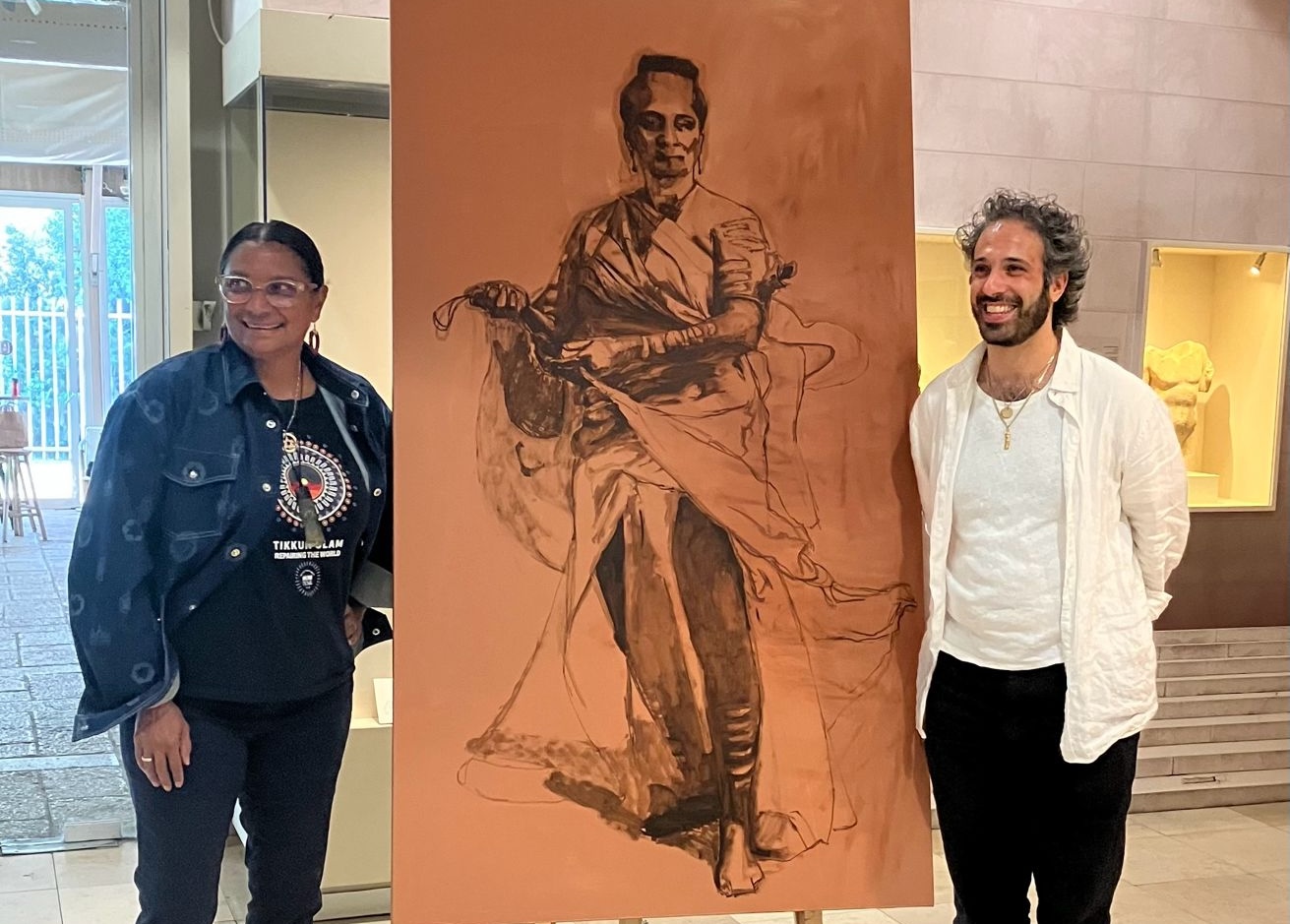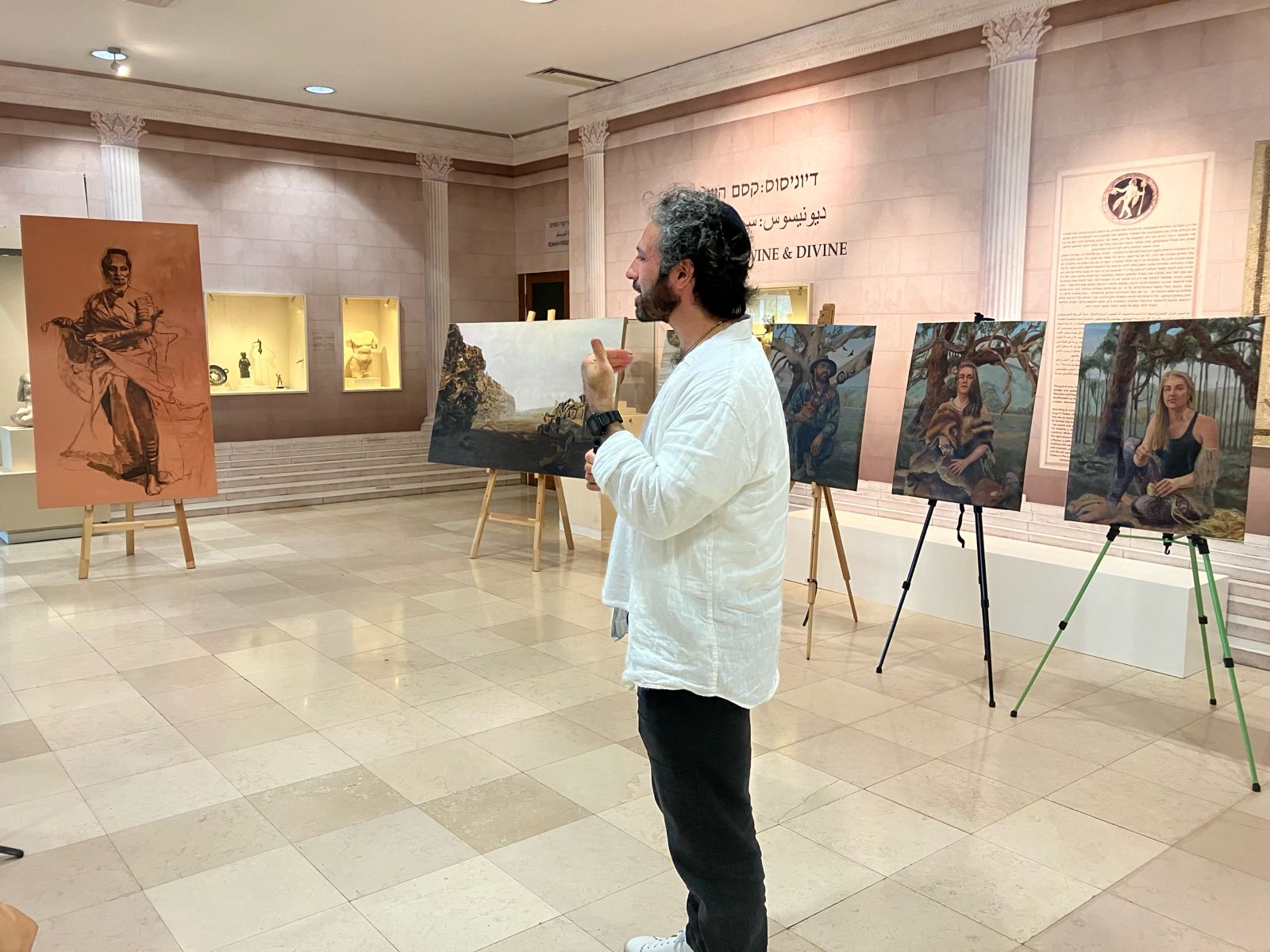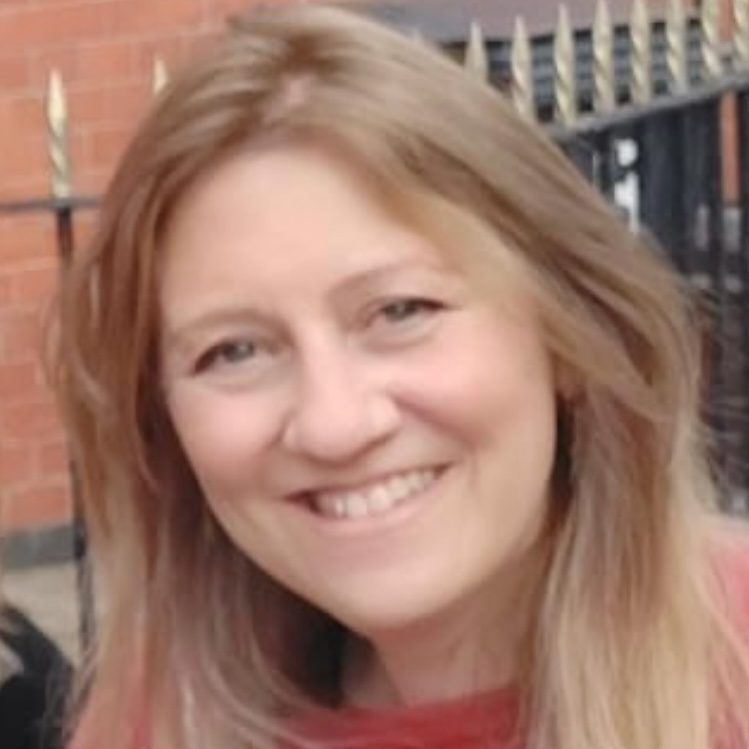Israeli-Australian artist Avraham Vofsi paints nation’s collective trauma in beautiful artworks

“The only way to get good at something is to be bad at it for a really long time,” Avraham Vofsi said, explaining his journey as an artist. “And so I thought to myself, well, I really like doing portraits, I'm just going to paint as many bad portraits as I can until I hopefully get better.”
For three years after graduating from art school in Melbourne, Australia, Vofsi created about 30 portraits a year, “just trying to get all my bad paintings out of the way as [soon as] possible,” he explains. “I was painting interesting people, but I was interested in not having my portraits clog up all the space in my studio, so what I would do is I would paint a portrait of somebody and then I would give them from the painting. And then I thought, well, since I was already painting essentially free portraits, why don't I just paint portraits of people who couldn’t ever afford one?”
In this way, Vofsi became involved in supporting Aboriginal protesters as they sought protection for their sacred sites and told their stories through art. He brought several stunning examples to the Indigenous Embassy Jerusalem’s Symposium at the Bible Lands Museum last week. Each one showed an Aboriginal protester in full regalia, guarding a tree, but towering over them all was a huge painting depicting Nova Peris standing proudly on top of Masada in Israel’s Arava desert, connecting her story as an indigenous Australian to that of the Jewish people, finally back in their land.
“I was spending a lot of time around people who were really, really connected to their country,” Vofsi explained. “I guess that went from an academic understanding of what it means to be connected to a country to like a really emotional, visceral experience. Their entire culture and worldview was informed by the land they're from.”

When Vofsi first came to Israel in 2022, his Jewish identity took on another level of meaning. He was increasingly drawn to Israel, finding it full of energy and interest, electricity and excitement, and made aliyah in the summer of 2023, just months before the worst attack in Israel’s history.
Since then, Vofsi has become a visual storyteller, artistically weaving a plethora of emotions, events and ideas together in an expression of what Israel has been going through since Oct. 7, 2023. Some of his work portrays familiar scenes, such as the car graveyard at the Nova Festival site, while others refer to the hostages who were held in Gaza for so long. Others blend biblical themes with the trauma Israel is going through today.
One piece, based on “Christina’s World,” the famous 1948 painting by Andrew Wyeth of his neighbor, recasts the character in the foreground as the biblical Ruth, looking with inexpressible emotions at Kibbutz Keren Shalom in the distance. The kibbutz was one of those hardest hit in the Hamas attack, and in Vofsi’s work, the image of Ruth holds the same kind of power and poise, as well as remarkable attention to detail, as Wyeth’s iconic work hanging in MoMA.
The award-winning artist spent years telling other people’s stories, and now he wanted to tell the stories of his own people. Following the explosion of antisemitism that so many Jews experienced after the attack, he realized that he wanted to create art not by way of explanation to outsiders, but to open up a way to grieve for the Jewish community.
“The thing about antisemitism and all racism, really, is you are playing to their drum,” he told the gathered crowd at the IEJ symposium. He explained how antisemitic attacks push Jewish people into the job of countering, educating, and performing, but that he was more interested in a dialogue within the community, sharing the Oct. 7 story on their own terms. “Fundamentally, I wanted to make work that was a response,” he said. “It was our story, right?”
He recounted how someone coming from an anti-Israel perspective had seen his works in an exhibition and asked, somewhat aggressively, “What do you want us to take from it?” While he didn’t think to say it at the time, Vofsi said that he wished his response had been, “I don't know if I care what you take from it because that’s not the point of the show. The show is a space for our story, making space for us to grieve and mourn. It’s a dialogue between us.”

As he described his recent works being something like a shiva, the Jewish tradition of collective grieving, his voice cracked with tears. “This is the first time I've ever said that, maybe two years on is the first time that that show ever made sense to me. That’s how long it took me.”
He described his art as a search for solace created for a nation in mourning. “Anyone who wants to be an ally to come into that space and meet with us, because it was such a horrifically monumental thing to happen. But in a way, the show was on purpose – a dialogue between us.”
Looking forward to his new artwork, Vofsi said, “All of you here in reaching back, gaining strength from knowing our history and sharing our history,” adding that he is now painting synagogues: “It’s one of the ways over the last 2,000 years that we've expressed art.” He has also started to paint weddings as celebrations of love and life.
Then, of course, there’s the picture that’s still in progress of Nova Peris, the Aboriginal athlete and former politician – a whole project in itself. In order to create the painting, they trekked together up the Masada fortress, where the Jewish rebels refused to surrender to the Romans. In her elaborate traditional outfit, each item replete with symbolism, Peris stands proudly on the rock, demonstrating her solidarity with Israel. The striking image tells the story of two indigenous people groups at once: both with ancient historical roots to their lands, both having undergone terrible hardship, but both still standing in resilience.

Jo Elizabeth has a great interest in politics and cultural developments, studying Social Policy for her first degree and gaining a Masters in Jewish Philosophy from Haifa University, but she loves to write about the Bible and its primary subject, the God of Israel. As a writer, Jo spends her time between the UK and Jerusalem, Israel.
You might also like to read this:
















